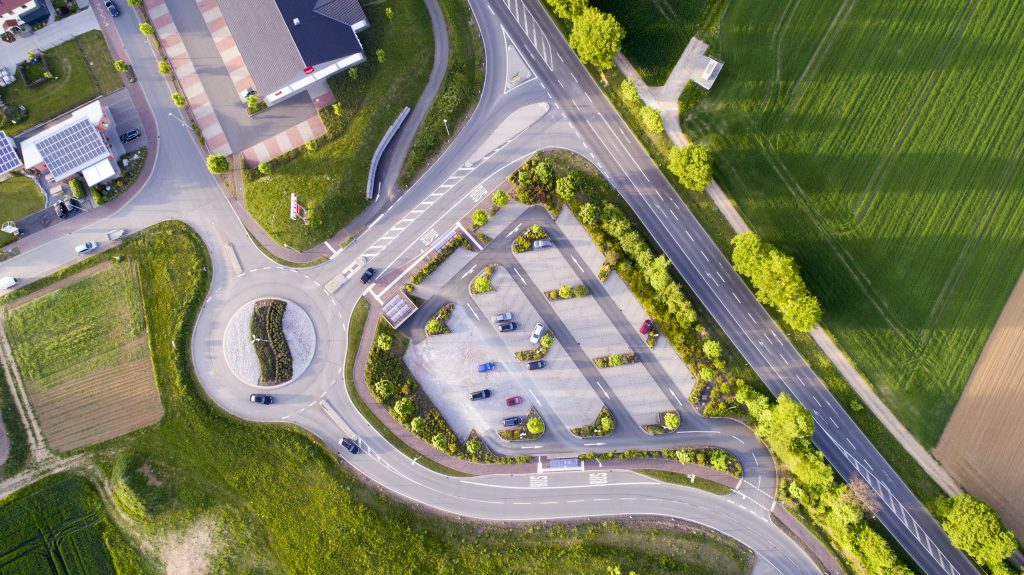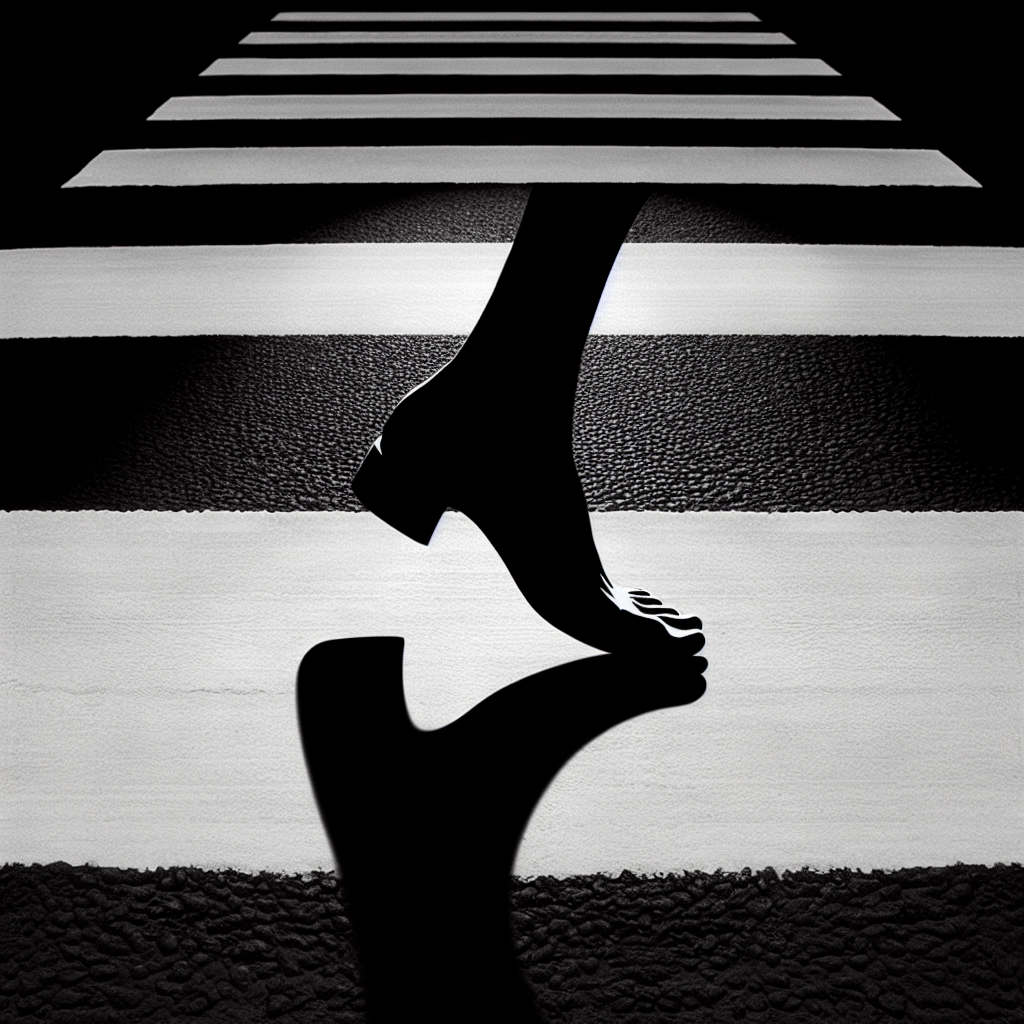Did you know that there is a famous photograph of The Beatles walking across Abbey Road? But have you ever wondered which Beatle decided to walk barefoot for that iconic shot? In this article, we will uncover the answer to this intriguing question and reveal the story behind this memorable moment captured on film. Join us as we take a trip down memory lane and explore the fascinating details surrounding this Beatles’ album cover. Get ready to discover the Beatle who dared to go shoeless as they crossed Abbey Road.

1. The Iconic Abbey Road Album Cover
Abbey Road, released in 1969, is one of The Beatles’ most acclaimed albums, and its cover has become one of the most recognizable and iconic images in music history.
1.1 The Beatles and Abbey Road
The Beatles, comprising John Lennon, Paul McCartney, George Harrison, and Ringo Starr, achieved unprecedented success and left an indelible mark on the music industry. Abbey Road was their eleventh studio album and their last recorded together before their breakup in 1970. It showcased their musical growth and experimentation, solidifying their place as legends in the music world.
1.2 The Album Cover Concept
The cover of Abbey Road was conceptualized by photographer Iain Macmillan and designed by Apple Records’ creative director, Kosh. The concept was simple yet striking: a photograph of the band members walking in a single file across the zebra crossing outside Abbey Road Studios, where they had recorded most of their music.
1.3 Symbolism and Interpretations
The Abbey Road album cover has sparked numerous interpretations and symbolic analyses over the years. Some believe that it represents The Beatles taking a symbolic “final walk” together, as it was their last album recorded before breaking up. Others see it as a statement of unity and collaboration, showcasing the band’s strong bond. The image has been dissected and discussed endlessly, contributing to its enduring appeal.
2. The Fab Four: John, Paul, George, and Ringo
Before delving into the mystery of the barefoot Beatle, it’s important to understand the individual members of The Beatles and their contributions to the band’s success.
2.1 John Lennon
John Lennon, known for his distinctive songwriting and introspective lyrics, was one of the primary forces behind The Beatles’ success. His iconic voice, combined with his thought-provoking and often politically charged lyrics, showcased his immense talent and creativity.
2.2 Paul McCartney
Paul McCartney, the mastermind behind many of The Beatles’ most beloved melodies, is widely regarded as one of the greatest songwriters of all time. His versatile vocal range, impressive bass playing, and ability to craft catchy pop tunes played a pivotal role in the band’s success.
2.3 George Harrison
George Harrison, often referred to as “the quiet Beatle,” brought a unique blend of spirituality and introspection to the group. His contributions as a guitarist and songwriter added depth and diversity to The Beatles’ sound, particularly with his exploration of Indian classical music.
2.4 Ringo Starr
Ringo Starr, the drummer of The Beatles, provided the rhythmic foundation for the band’s music. His steady beats and distinctive drumming style helped define the sound of countless Beatles songs. Ringo’s wit and charm also endeared him to fans around the world.
3. The Barefoot Mystery
Now, we delve into the mysterious element of the Abbey Road album cover—the barefoot Beatle. For decades, fans and enthusiasts have speculated about the identity of the band member who chose to go barefoot during the photoshoot.
3.1 Rumors and Speculations
Various rumors and speculations have circulated over the years, fueling the mystery surrounding the barefoot Beatle. Some theories suggested that it was John Lennon, known for his rebellious nature and tendency to challenge societal norms. Others believed it was Paul McCartney, based on his role as the band’s frontman and his affinity for iconic fashion choices.
3.2 Clues and Analyses
Fans and experts analyzed the album cover meticulously, searching for clues that could shed light on the mystery. Some speculated that the barefoot Beatle was wearing a different suit, compared to the others, suggesting a deliberate choice and hidden symbolism. Others examined the positioning of the band members and their body language, looking for subtle indications that could reveal the truth.
3.3 The Identity Revealed
After years of speculation, it was eventually revealed that Paul McCartney was the barefoot Beatle. Paul had forgotten his sandals that day and decided to walk across the famous zebra crossing without any shoes. The revelation put an end to the mystery, but it sparked a new wave of fascination and interest in the album cover.
4. Paul McCartney: The Barefoot Beatle
Paul McCartney’s decision to go barefoot during the Abbey Road photoshoot was not a random choice but held personal significance for the legendary musician.
4.1 Paul’s Personal Connection to Footwear
Throughout Paul McCartney’s career, footwear played an important role in his fashion and image. From his signature Chelsea boots to his exploration of psychedelic styles, shoes were a means of self-expression for the talented musician. Going barefoot on the Abbey Road cover was a departure from his usual fashion choices and symbolized a more natural and authentic side of himself.
4.2 Symbolism Behind His Bare Feet
McCartney’s bare feet on the album cover represented vulnerability and simplicity. It was a visual statement that stripped away the trappings of fame and showcased the band’s down-to-earth nature. The image of McCartney walking barefoot conveyed a sense of authenticity and highlighted his connection to nature and simplicity.
4.3 McCartney’s Explanation and Confirmation
In interviews, McCartney confirmed his decision to walk barefoot for the Abbey Road cover. He explained that his feet were dirty and he found it uncomfortable to wear shoes without socks. Rather than delaying the photoshoot, he made the spontaneous choice to go barefoot, unaware of the impact it would have on pop culture and the enduring fascination it would generate.

5. The Significance of Bare Feet
The decision to go barefoot on the Abbey Road album cover carries deeper symbolism and meaning beyond Paul McCartney’s personal choice.
5.1 Spiritual and Philosophical Interpretations
Bare feet have long been associated with spiritual and philosophical practices, representing a connection to the earth and the grounding of oneself. In various cultures, walking barefoot symbolizes a release from material possessions and a return to simplicity and inner peace. McCartney’s bare feet captured this essence, hinting at a deeper spirituality and a rejection of superficiality.
5.2 Reflection of Peace and Freedom
During the late 1960s, a period marked by political unrest and social change, McCartney’s bare feet struck a chord with the counterculture movement. It resonated with the ideals of peace, freedom, and nonconformity that were prevalent at the time. The image represented a break from societal expectations and a celebration of individuality.
5.3 McCartney’s Influence on the Beatles’ Image
As one of the leading members of The Beatles, McCartney’s fashion choices and image had a significant impact on the band’s overall aesthetic. His decision to go barefoot on the Abbey Road cover added an element of rebellion and uniqueness to their image, cementing their status as cultural icons. McCartney’s influence extended beyond music, shaping the fashion and cultural landscape of the time.
6. Impact on Pop Culture
The Abbey Road album cover, with its barefoot Beatle and the striking image of The Beatles crossing the zebra crossing, has had a profound impact on pop culture.
6.1 The Enduring Image of Abbey Road
The Abbey Road album cover has become synonymous with The Beatles and remains an enduring symbol of their legacy. It has been reproduced, parodied, and referenced countless times in various forms of media, from album artwork to movies to social media posts. The image continues to captivate and inspire new generations of music enthusiasts.
6.2 Barefoot Photography Trend
The barefoot Beatle sparked a trend in photography, with many artists and photographers being inspired to incorporate bare feet into their work. The symbolic nature of bare feet resonated with a broader audience, and it became a popular motif in fashion, art, and lifestyle photography.
6.3 Influence on Music and Fashion
The Abbey Road album cover influenced not only visual arts but also music and fashion. The image of The Beatles walking in single file became a powerful visual representation of unity and collaboration, inspiring musicians to experiment with album covers and promotional material. Additionally, McCartney’s fashion choices, including his bare feet, set trends and shaped the fashion landscape of the late 1960s and beyond.

7. Abbey Road and Beatlemania
Abbey Road, as an album and an album cover, played a significant role in the phenomenon of Beatlemania and holds a unique place in music history.
7.1 Album’s Reception and Legacy
Abbey Road received critical acclaim upon its release and continues to be regarded as one of The Beatles’ greatest albums. The innovative and experimental nature of the music, combined with the iconic imagery of the album cover, solidified its place in music history. Abbey Road stands as a testament to the band’s enduring influence and artistic legacy.
7.2 Beatlemania Phenomenon
The Beatles, as the figureheads of Beatlemania, experienced unparalleled levels of fame and adoration. The Abbey Road album cover became a focal point of this phenomenon, amplifying the hysteria surrounding the band. Fans flocked to Abbey Road Studios to recreate the iconic crossing, further fueling the Beatlemania craze and solidifying the album cover’s status as a cultural touchstone.
7.3 Abbey Road as a Cultural Icon
Abbey Road, both as an album and a physical location, has transcended its status as a mere recording studio. It has become a pilgrimage site for Beatles fans, attracting tourists from around the world who visit the zebra crossing to pay homage to the iconic album cover. The place has maintained its cultural significance, reminding people of The Beatles’ immense impact on music and popular culture.
8. Behind the Scenes of the Photo Shoot
The creation of the Abbey Road album cover involved various individuals and interesting details that contribute to its enduring mystique.
8.1 Linda McCartney’s Photography
Linda McCartney, Paul McCartney’s wife and an accomplished photographer, captured the iconic Abbey Road image. Her unique perspective and talent as a photographer helped immortalize the band’s final stroll together. Linda’s involvement brought an intimate and personal touch to the photo shoot, adding to its historical significance.
8.2 Challenging Logistics
The logistics of capturing the perfect shot on the Abbey Road zebra crossing presented its own set of challenges. The band members had a limited time window to pose for the photo, as they were working against the busy traffic of a London street. Despite these challenges, Iain Macmillan and the team managed to capture the iconic image that has stood the test of time.
8.3 Other Interesting Details
During the photoshoot, a white Volkswagen Beetle happened to be parked alongside the road, providing an unexpected element to the composition. This detail, although unplanned, has become an integral part of the Abbey Road cover’s charm. Additionally, the album cover artwork intentionally excluded The Beatles’ name and the album title, allowing the image itself to speak volumes.

9. Abbey Road Today
Even decades after its release, Abbey Road and the album cover continue to hold a special place in popular culture.
9.1 The Zebra Crossing
The zebra crossing outside Abbey Road Studios has remained a pilgrimage site for Beatles fans. The crossing has been preserved and is still in use, drawing visitors from all over the world who want to recreate the iconic image or pay tribute to their favorite band.
9.2 Tourist Attraction
Abbey Road Studios, once a hub of creativity for The Beatles and numerous other artists, has transformed into a tourist attraction. Fans can take guided tours, visit the studios, and immerse themselves in the rich history and legacy of The Beatles.
9.3 Ongoing Tribute and Homage
The influence of Abbey Road and the iconic album cover continues to be celebrated through various forms of tribute and homage. Artists and musicians often reference or reinterpret the image to pay homage to The Beatles’ impact on popular culture. The enduring fascination with Abbey Road ensures that its legacy remains alive and thriving.
10. Conclusion
The Abbey Road album cover, with the mysterious barefoot Beatle, has transcended its origins and become a cultural phenomenon. Paul McCartney’s spontaneous decision to walk barefoot immortalized The Beatles’ final studio album and solidified their place in music history. The image’s enduring significance and influence on pop culture speak to the band’s enduring impact and the timeless appeal of their music. As fans and enthusiasts continue to visit the zebra crossing and recreate the iconic pose, Abbey Road remains an enduring symbol of The Beatles’ greatness.
Disclosure: As an Amazon Associate, I earn from qualifying purchases.

